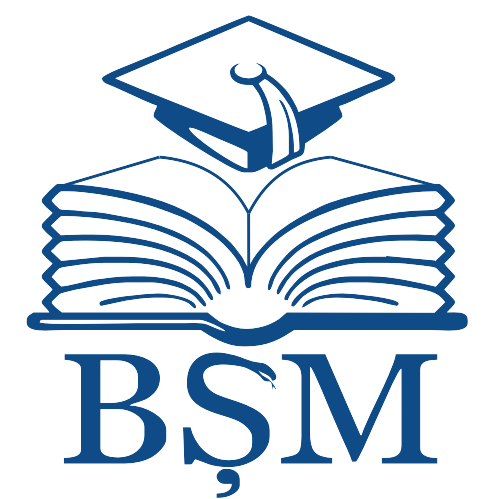|
|
- IRMS - Nicolae Testemitanu SUMPh
- 1. COLECȚIA INSTITUȚIONALĂ
- Revista de Științe ale Sănătății din Moldova
- Revista de Științe ale Sănătății din Moldova : Moldovan Journal of Health Sciences 2024 Vol. 11, Issue 2
Please use this identifier to cite or link to this item:
http://hdl.handle.net/20.500.12710/29213
| Title: | Rezistența la antimicrobiene și potențialul de formare a biofilmelor a tulpinilor de Pseudomonas aeruginosa izolate din plăgi |
| Other Titles: | Antimicrobial resistance and biofilm forming potential of Pseudomonas aeruginosa strains isolated from wounds |
| Authors: | Cebanu, Tatiana |
| Keywords: | Pseudomonas aeruginosa;biofilms;antimicrobial drugs;resistance |
| Issue Date: | 2024 |
| Publisher: | Instituţia Publică Universitatea de Stat de Medicină şi Farmacie „Nicolae Testemiţanu” din Republica Moldova |
| Citation: | CEBANU, Tatiana. Rezistența la antimicrobiene și potențialul de formare a biofilmelor a tulpinilor de Pseudomonas aeruginosa izolate din plăgi = Antimicrobial resistance and biofilm forming potential of Pseudomonas aeruginosa strains isolated from wounds. In: Revista de Ştiinţe ale Sănătăţii din Moldova = Moldovan Journal of Health Sciences. 2024, vol. 11, nr. 3, anexa 2, p. 171. ISSN 2345-1467. |
| Abstract: | Introducere. Pseudomonas aeruginosa este una dintre cele mai rezistente și periculoase bacterii izolate din plăgile infectate. Scopul . Determinarea prevalenței P. aeruginosa în infecția de plagă și evaluarea profilurilor de sensibilitate la antimicrobiene și capacitatea de formare a biofilmelor. Material și metode . Identificarea P. aeruginosa s-a făcut pe baza caracterelor de cultură, morfo-tinctoriale și a proprietăților biochimice determinate cu sistemul Vitek 2 Compact. Testarea sensibilității la antibiotice s-a efectuat prin determinare a concentrațiilor minime inhibitorii (sistemul Vitek 2). Testarea la antibiotice și interpretarea rezultatelor s-a făcut standardizat, respectând ghidurile EUCAST (Euro pean Committee of Antimicrobial Susceptibility Testing) de testare la antibiotice în vigoare. Producerea de biofilm a fost determinată calitativ utilizând metoda tuburilor. Rezultate . Prevalența P. aeruginosa izolată din plăgile infectate a fost de 27,5%. Tulpinile izolate au prezentat rezistență în 90,6% la ticarcilină, 78,1% la piperacilină și în 66,7% la penicilină combinată cu inhibitori de beta-lactamaze Rezistența la cefalosporinele antipseudomonas a fost observată la 68,7% tulpini, iar frecvența rezistenței multiple (MDR) a fost de 65,6%. Toate izolatele de P. aeruginosa au produs biofilme. Din cele 32 de izolate testate, 17 (53,1%) au produs biofilm puternic aderent. O corelație pozitivă semnificativă a fost observată între formarea biofilmului și profilul de rezistență la antibiotice. Concluzii. Rezultatele acestui studiu denotă că plăgile infectate ar putea fi un rezervor pentru tulpinile de P. aeruginosa MDR. Potențialul acestor tulpini de a forma biofilme puternic aderente în plăgile infectate este o problemă serioasă de sănătate publică. Prin urmare, sunt necesare programe de supraveghere pentru monitorizarea și controlul P. aeruginosa MDR la acești pacienți pentru a preveni diseminarea acestora în mediul spitalicesc.
Introduction. Pseudomonas aeruginosa is one of the most resistant and dangerous bacteria isolated from infected wounds. Aim . Finding of prevalence of P. aeruginosa in the wound infection and evaluation of its sensitivity for antimicrobial drugs and its capacity to form biofilms. Materi al and methods . Identification of P. aeruginosa was made based on cultural, morpho-tinctorial and biochemical characters determined with Vitek 2 Compact system. Antibiotic sensitivity testing was performed by determining the minimum inhibitory concentrations (Vitek 2 system). Antibiotic testing and interpretation of the results were standardized, following the EUCAST (European Committee of Antimicrobial Susceptibility Testing) guidelines for antibiotic testing in force. Biofilm production was qualitatively determined using the tube method. Results . The prevalence of P. aerugi nosa isolated from infected wounds was 27,5%. The isolated strains showed resistance in 90.6% to ticarcillin, 78.1% to piperacillin and in 66.7% to penicillin combined with beta-lactamase inhibitors Resistance to antipseudomonas cephalosporins was observed in 68.7% of strains, and the frequency multiple resistance (MDR) was 65.6%. All isolated P. aeruginosa produced biofilms. Of those 32 isolates tested, 17 (53.1%) produced strongly adherent biofilm. A significant positive correlation was observed between biofilm formation and antibiotic resistance profile. Conclu sions. The results of this study show that infected wounds could be a reservoir for MDR P. aeruginosa strains. The potential of these strains to form highly adherent biofilms in infected wounds is a serious public health concern. As a result, surveillance programs are needed for monitoring and control of MDR P. aeruginosa in these patients to prevent their dissemination in the hospital environment. |
| metadata.dc.relation.ispartof: | Revista de Științe ale Sănătății din Moldova = Moldovan Journal of Health Sciences |
| URI: | https://cercetare.usmf.md/sites/default/files/inline-files/MJHS_11_3_2024_anexa2__site.pdf
https://repository.usmf.md/handle/20.500.12710/29213 |
| ISSN: | 2345-1467 |
| Appears in Collections: | Revista de Științe ale Sănătății din Moldova : Moldovan Journal of Health Sciences 2024 Vol. 11, Issue 2
|
Items in DSpace are protected by copyright, with all rights reserved, unless otherwise indicated.
|


